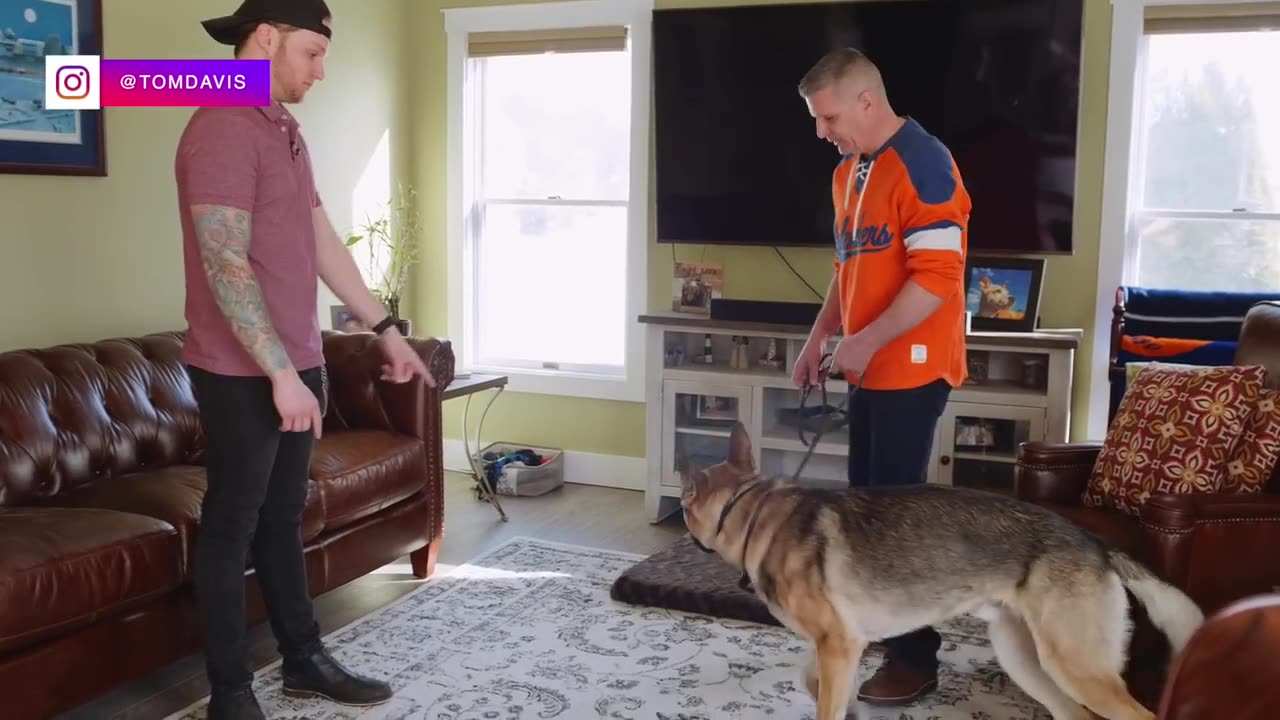Premium Only Content

How to train your dog to leave your cat alone
Basic Commands: Teaching fundamental commands such as "sit," "stay," "down," "come," and "heel" lays the foundation for good behavior and effective communication between the dog and its owner.
Socialization: Exposing dogs to different people, animals, environments, and experiences helps them develop confidence, reduce anxiety, and prevent behavioral problems.
Behavior Modification: Addressing and altering unwanted behaviors like excessive barking, digging, jumping, and aggression through positive reinforcement and redirection
Leash Training: Teaching dogs to walk calmly on a leash without pulling or tugging ensures enjoyable walks for both the dog and the owner.
Crate Training: Introducing dogs to a crate as a safe and comfortable space helps with housetraining, security, and travel.
House Training: Teaching dogs appropriate elimination behaviors, typically outdoors, to maintain a clean living environment
Advanced Skills: Training dogs for more advanced commands, such as tricks, agility, search and rescue, and service tasks, depends on the dog's aptitude and the owner's goals.
Positive Reinforcement: Using rewards like treats, praise, and toys to reinforce desired behaviors and encourage the dog to repeat those behaviors
Consistency: Establishing consistent rules and routines helps dogs understand what is expected of them, leading to more predictable behavior.
Patience and Understanding: Recognizing that each dog is unique, with its own personality and learning pace, is crucial for effective training. Remaining patient and understanding promotes a positive training experience.
-
 LIVE
LIVE
Glenn Greenwald
2 hours agoRFK Jr. Hearing Reveals DC Pro-Pharma Consensus; Trump's Executive Order to Deport Student Protesters Criticizing Israel; Untangling DC Think Tank Funding & Influence | SYSTEM UPDATE #399
4,193 watching -
 LIVE
LIVE
The Jimmy Dore Show
1 hour agoLiz Warren DEFENDS Big Pharma At RFK Hearing! Trump Dismisses Concerns Over NJ Drones!
11,474 watching -
 1:46:16
1:46:16
Redacted News
3 hours agoRFK CONFIRMATION: Kennedy goes to WAR with Big Pharma Democrats in Fiery Hearing | Redacted Live
80.8K192 -
 57:31
57:31
Candace Show Podcast
3 hours agoBREAKING! Taylor Swift Turns Against Blake Lively & Ryan Reynolds | Candace Ep 141
104K137 -
 LIVE
LIVE
Sarah Westall
50 minutes agoRFK Jr Report, Constitution Suspended, War Time Procedures in Place, WHO Exit, DOD w/ Sasha Latypova
529 watching -
 LIVE
LIVE
Melonie Mac
4 hours agoGo Boom Live Ep 35!
454 watching -
 1:01:13
1:01:13
LFA TV
8 hours agoPRESIDENT TRUMP SIGNS LAKEN RILEY ACT | BASED AMERICA 1.29.25 6pm
6.99K4 -
 LIVE
LIVE
2 MIKES LIVE
1 hour ago2 MIKES LIVE #172 News Breakdown Wednesday!
210 watching -
 LIVE
LIVE
The Big Mig™
3 hours agoJ6’r Ryan Samsel Free At Last The BOP & DOJ Exposed
1,939 watching -
 LIVE
LIVE
The Based Mother
3 hours agoEXECUTIVE ORDER MUTILATES GENDER IDEOLOGY! Trump’s pulling out all the stops.
97 watching